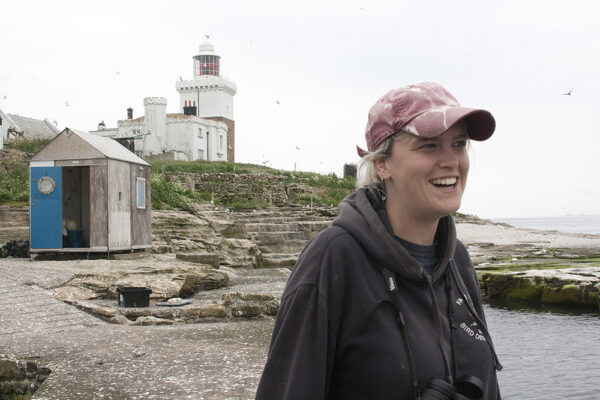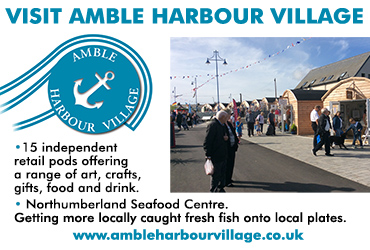Holly’s loving life on Coquet Island
Coquet Island is an important part of the life and culture of Amble, but what goes on out there?
The first part of the season was all about getting the Island ready for the breeding seabirds. We had an incredible team of volunteers helping to put gravel on the Roseate tern terraces, cut the grass to make habitat for Arctic and Common terns, and a host of small but vital jobs such as washing bedding and bringing people and supplies on and off in the boat.

Holly Pickett is a seabird assistant on the island
As a seabird assistant, I arrived on 1 May as the seabirds began trickling in. Once the birds began to lay eggs, our attention turned to census counts. For Black-headed gulls, Eiders, and Sandwich terns, this involves walking in a line through a colony to count each and every nest.
Puffins are trickier as they nest underground, so we count a random sample of occupied burrows.
Next up it’s the Arctic and Common terns – the noisiest of our seabirds! Chicks and eggs pop up all over the island. When the Eiders (Cuddy Ducks) hatch the parents take their ducklings over to the River Coquet. Non-breeding females, known as ‘aunties’ often help look after the ducklings and several families will group together in creches. So, keep a look out if you’re around the harbour and river mouth!
Puffins were seen flying in with beakfuls of Sandeels, a sure sign they had hungry pufflings in their burrows.
The Roseate tern is one of the UK’s rarest breeding birds, and a big part of our job is protecting and monitoring the colony on Coquet Island. We provide gravel and boxes for them to nest in, look out for any predators such as rodents making it onto the island, and keep disturbance to a minimum and this year we were rewarded with Roseate tern chicks.
One of the best bits of my job is spending an afternoon in the Roseate tern hide reading rings. These can be read through a telescope, so we have an idea of which individuals are returning to breed, how old they are, and where they go. I love to spend time amongst the Roseate and Common terns, watching their daily lives. It can be hard not to anthropomorphise them when a male struts around with a particularly impressive fish, or someone strays into their neighbours’ patch and gets an earhole bashing!
Recently we have been busy setting up our productivity monitoring plots. We monitor a set number of nests of species including Arctic and Common Terns, Black-headed Gulls, and Kittiwakes.
We regularly count them to calculate how many young successfully fledge (leave the nest) as a proportion of the attempts made to breed. I love to sit and watch a cliff full of kittiwakes. It’s like a puzzle to complete as you work through each nest to figure out who has chicks or eggs, and how many.
In other news, wardens and birdwatchers alike have been excited by the presence of a Bridled tern on the island. This is a tropical species which is usually found in the Caribbean, West Africa and Australasia. We have had absolutely first-class views of it from the lighthouse, chasing Common terns for fish and circling high above the tower performing acrobatics with Arctic terns.
It’s been a fantastic start to the season, I’m delighted to be working in such an incredible place and look forward to seeing what the rest of the year holds.
Holly Pickett












